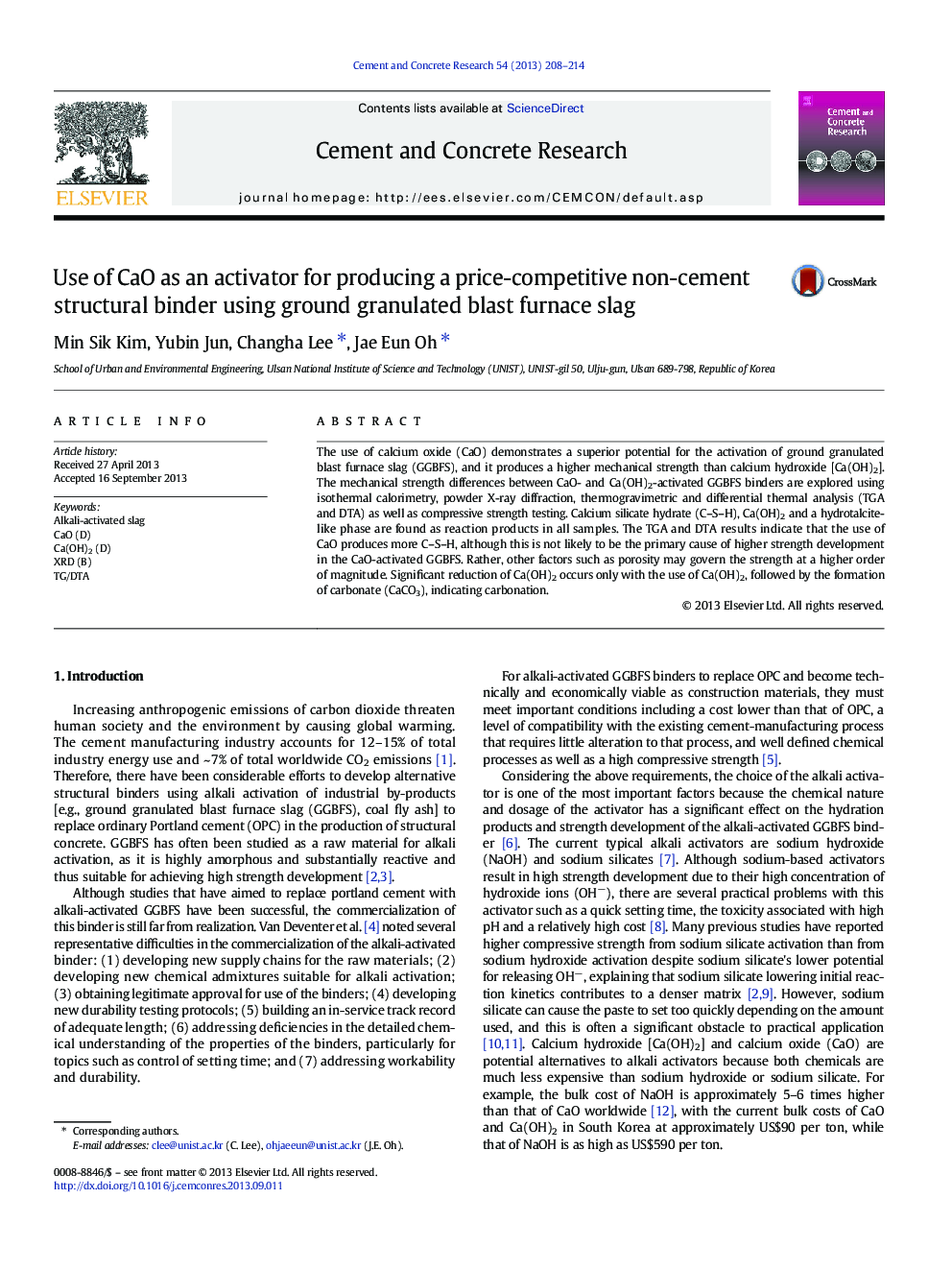| کد مقاله | کد نشریه | سال انتشار | مقاله انگلیسی | نسخه تمام متن |
|---|---|---|---|---|
| 1456456 | 1509767 | 2013 | 7 صفحه PDF | دانلود رایگان |

• CaO showed a better potential for the activation of GGBFS than Ca(OH)2.
• Strength test, XRD, TGA/DTA and isothermal calorimetry are used.
• C-S-H, Ca(OH)2, and a hydrotalcite-like phase are found in all samples.
• The use of Ca(OH)2 causes some degree of carbonation.
The use of calcium oxide (CaO) demonstrates a superior potential for the activation of ground granulated blast furnace slag (GGBFS), and it produces a higher mechanical strength than calcium hydroxide [Ca(OH)2]. The mechanical strength differences between CaO- and Ca(OH)2-activated GGBFS binders are explored using isothermal calorimetry, powder X-ray diffraction, thermogravimetric and differential thermal analysis (TGA and DTA) as well as compressive strength testing. Calcium silicate hydrate (C–S–H), Ca(OH)2 and a hydrotalcite-like phase are found as reaction products in all samples. The TGA and DTA results indicate that the use of CaO produces more C–S–H, although this is not likely to be the primary cause of higher strength development in the CaO-activated GGBFS. Rather, other factors such as porosity may govern the strength at a higher order of magnitude. Significant reduction of Ca(OH)2 occurs only with the use of Ca(OH)2, followed by the formation of carbonate (CaCO3), indicating carbonation.
Journal: Cement and Concrete Research - Volume 54, December 2013, Pages 208–214